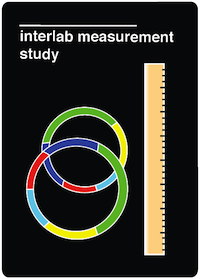Team:Austin Texas/interlab study
From 2014.igem.org
Jordanmonk (Talk | contribs) |
|||
| Line 137: | Line 137: | ||
<h1>Microplate Reader Data and Discussion</h1> | <h1>Microplate Reader Data and Discussion</h1> | ||
| - | [[File:interlabchartminimal.png|440px|right|thumb| '''Figure 2.''' | + | [[File:interlabchartminimal.png|440px|right|thumb| '''Figure 2.''' Relative fluorescence data for the three parts measured.]] |
| - | Data was collected using Infinite 200 PRO Microplate Reader and a 96 well black plate with 80 | + | Data was collected using Infinite 200 PRO Microplate Reader and a 96 well black plate with 80 µl of culture per well. As shown in Figure 2, we used triplicate cultures and took averages of each set to represent the measured relative fluorescence of the part. Our representation of the data subtracts the fluorescence of the media background from the GFP signal, and then is divided by the OD<sub>600</sub> of the cell culture with the OD<sub>600</sub> of the media subtracted, or (GFP-LB<sub>bkgd</sub>)/(OD<sub>600</sub>-OD<sub>600</sub>LB<sub>bkgd</sub>). |
| - | Despite the genetic similarities in the | + | Despite the genetic similarities in the devices—all three contained the same coding sequence, two devices had the same backbone and two devices had the same promoter sequence—there were stark differences in the amount of fluorescence produced by each of the devices. |
| - | While we expected the device with a strong promoter and the highest copy number plasmid to have the highest fluorescence, | + | While we expected the device with a strong promoter and the highest copy number plasmid to have the highest fluorescence, we did not observe this to be the case. Instead, we saw that the two constructs with the same promoter and coding region in both the medium copy number plasmid pSB3K3 and the high copy number plasmid pSB1C3 actually yielded the strongest fluorescence signal in the medium copy number plasmid. It is possible that the high copy number plasmid pSB1C3 had a negative effect on overall fluorescence—perhaps it became toxic or slowed cell growth. However, it is also possible that we may have swapped cultures or mislabeled an initial eppendorf or culture tube. If not, we consider that the medium copy plasmid pSB3K3, while lower copy number than pSB1C3, may be a better expression platform for this protein. |
| - | + | ||
| + | In comparing the constructs with the same coding sequence and plasmid backbone but different promoters, it should be noted that the sequence of the promoter J23115 used in our measurements differed by two bases from the reference sequence in the registry. While the sequence we used is consistent with the Spring 2014 Kit Distribution sequence analysis performed by the Biobricks Foundation, it is likely that the promoter we used may have a different activity than the reference sequence. We observed that the promoter J23101 showed a several-fold stronger signal than our mutated promoter J23115. While the [http://parts.igem.org/Promoters/Catalog/Anderson measured relative fluorescence data] of the reference sequences generally agrees with our data, the mutated J23115 shows slightly less activity compared to the reference. | ||
<!-- WIKI CONTENT ENDS --> | <!-- WIKI CONTENT ENDS --> | ||
<html> | <html> | ||
Revision as of 04:33, 17 October 2014
| |||||||||||||||||||||||||||||
 "
"



